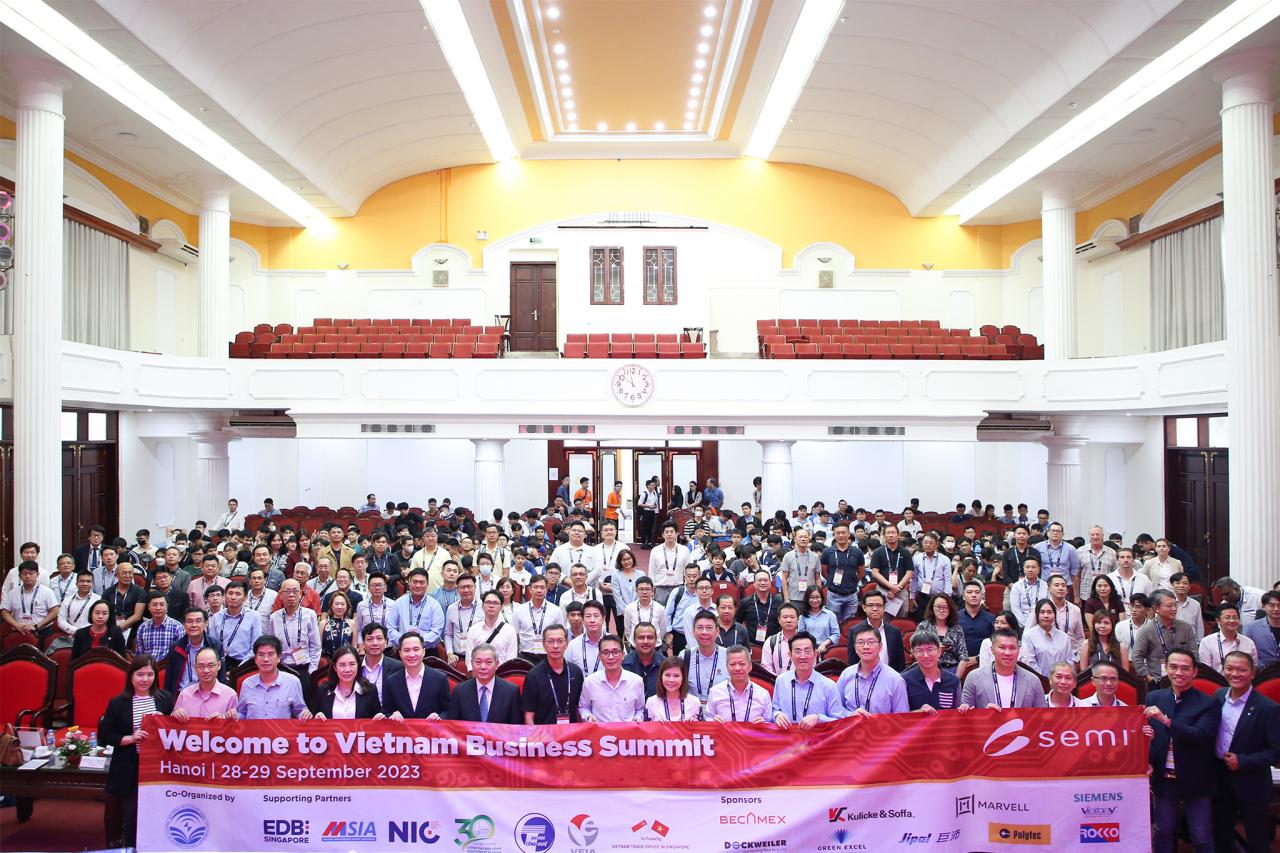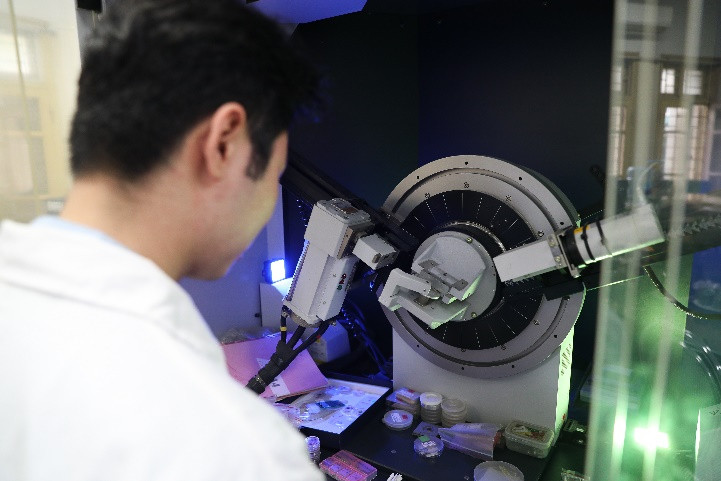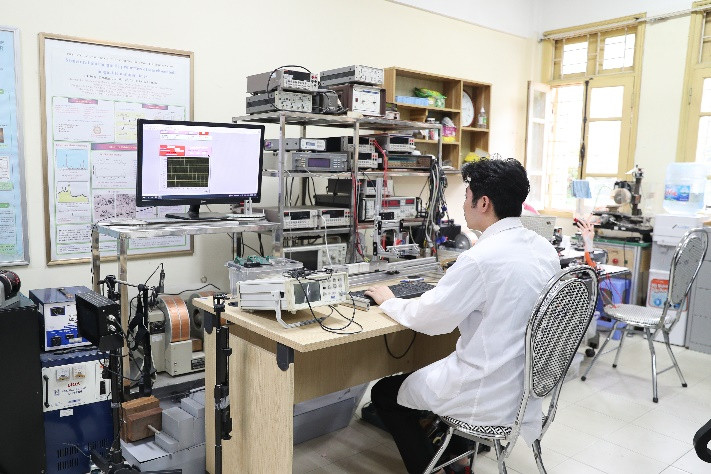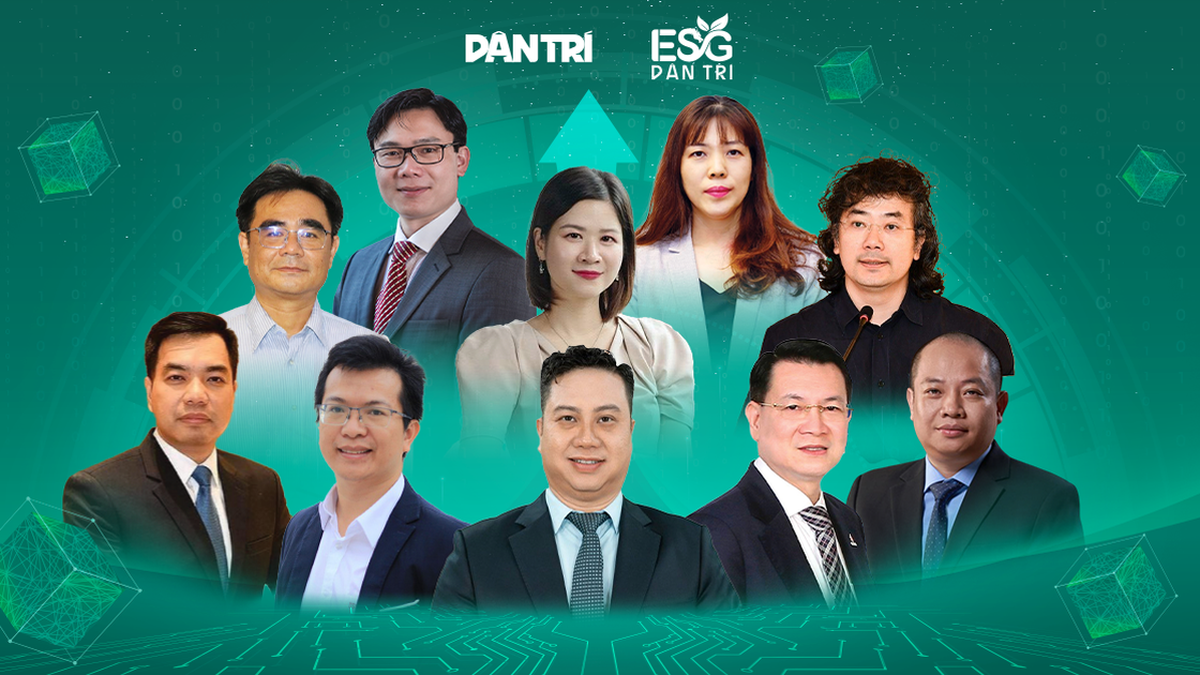By 2030, the global semiconductor industry will need an additional 900,000 people. Vietnam wants to become an important link in the global supply chain, so it needs to find a solution to the human resource problem soon.
Semiconductors, microchips: Key industries of many countries
Semiconductors, IC design and related industries are of great concern to many countries. Domestic and international experts and managers recently focused on discussing this topic at the "SEMI SEA TalentConnect - Connecting Talents" Forum organized by the Global Semiconductor Industry Association (SEMI) in collaboration with Hanoi National University within the framework of the Vietnam Business Summit 2023.

The forum attracted the participation of many domestic and international experts and managers.
“We are surrounded by semiconductors,” notes Scott Nguyen, Director of Customer Support, Products and Aftermarket Services, Kulicke & Sofa. “These tiny chips control everything from cell phones to cars… Semiconductors play a vital role in shaping the world.”
With revenue of hundreds of billions of USD, the semiconductor and microchip industry has become a key industry of many countries. "In 2022, global semiconductor chip revenue will reach about 600 billion USD," said Mr. Le Quang Dam, General Director of Marvell Technology Vietnam.
Presenting on the topic “Microchip Design, Your Future”, Mr. Edmund Mok, Singapore Economic Development Board (EDB Singapore) said that with a workforce of more than 35,000 people, the semiconductor industry contributed 57 billion USD last year, accounting for 7% of Singapore's GDP. Currently, 8 out of the top 10 microchip design companies have design teams and other R&D departments located in Singapore, specifically: AMD, Mediatek, nVidia, Marvell, Broadcom, Qualcomm, Realtek, Omnivision.
Turning to Vietnam, the semiconductor and microchip industry has accounted for one-third of total export turnover in recent years. “The semiconductor industry is on the path of development and has many opportunities for success in the future,” said Professor - Dr. Chu Duc Trinh, President of the University of Technology - Vietnam National University, Hanoi, and also pointed out a number of reasons: “Vietnam has an extremely favorable geographical location, a fairly good electronics industry foundation, plus a team of high-quality and highly skilled, dedicated, hard-working, and creative human resources, with more than 70 universities in the fields of technology and STEM nationwide, some of which are highly ranked in the world.”
The domestic microchip design and manufacturing industry is attracting FDI capital from a number of leading international semiconductor technology corporations such as: Samsung, Hana Micron (Korea); Intel, Synopsys, Qorvo (USA); Renesas Electronics (Japan); USI Electronics (Taiwan - China) ...
“The contributions still mainly come from FDI enterprises. We still do not have many large enough Vietnamese electronics companies. There is still a long way to go for Vietnam to be on the world electronics industry map,” Professor – Dr. Chu Duc Trinh expressed his opinion.
Human resource shortage: A global challenge
Emphasizing that “semiconductor talent is sought after globally,” Mr. Edmund Mok cited a remarkable figure: By 2030, the semiconductor industry will need an additional 900,000 employees.
According to the representative of the Singapore Economic Development Board, countries that have just announced investment in semiconductor manufacturing plants will have a serious shortage of skilled personnel. Therefore, governments and businesses are focusing their strategies on the school sector and new training programs to develop talented semiconductor human resources.
In Taiwan (China), a $300 million investment will be co-funded by the government and companies such as TSMC and MediaTek into four new "chip schools" in the next 8-12 years to meet the need for about 34,000 semiconductor workers.
In Singapore, in addition to the new training program to develop a pool of semiconductor talent, the Digital IC Design Professional Certificate has been introduced to enhance the chip design capabilities of talented people to prepare them for the future semiconductor and IC industry. EDB Singapore also organizes many activities to support young people to get in touch with the semiconductor industry, through the following activities: Career Fair; Summer Camp “Chip Design – Your Future”; Semiconductor Company Tours...

The shortage of high-quality human resources for semiconductor and microchip manufacturing is a global challenge.
International experts agree that the shortage of high-quality human resources for semiconductor and microchip production is a global challenge. Vietnam is no exception.
In the context of geopolitical conflicts that have pushed many corporations and semiconductor companies to move their production facilities from mainland China to Southeast Asian countries, including Vietnam, the President of the University of Technology believes that in the next 2-5 years, Vietnam will be able to become an important link in the global semiconductor chain.
To take advantage of and promote opportunities and potentials, Vietnam needs to soon find effective solutions to the human resource problem.
“Talented students in semiconductors and microchips do not have to worry about a lack of jobs. Job opportunities are not only available in Vietnam but also in the international market,” Ms. Do Thi Thuy Huong, Vietnam Electronic Enterprises Association, envisions the future.
“Bright spot” in semiconductor human resource training in Vietnam
University of Technology is one of the "bright spots" in training semiconductor and microchip human resources, meeting the needs of domestic and international enterprises.
Not only does the school cooperate closely with the Netherlands, Japan, and Korea in semiconductor training, it also regularly sends students to participate in international exchange, training, and research programs; most recently, the faculty and student exchange program organized by SEMI in Malaysia.
Semiconductor and microchip-oriented training programs from undergraduate to master's and doctoral levels have been taught for many years, contributing to training thousands of high-quality human resources capable of participating in different stages of the microchip design industry.

Laboratory of manufacturing and testing of semiconductor materials and components of University of Technology - Vietnam National University, Hanoi.
Along with that, 4 laboratories are implementing research directions on manufacturing semiconductor components, designing and manufacturing advanced electromechanical components and systems, researching Micro-nano materials and components, designing and applying electronic microcircuits..., initially having certain results.
Every year, students are encouraged and facilitated to participate in many competitions and exchange with international students, such as: LSI design contest held annually in Japan; Synopsys ARC design contest in Taiwan; SEACAS Hackathon in Indonesia; Chipathon in Malaysia...
Extensive cooperation with partners who are potential enterprises and have technology in the field of semiconductor chip/microchip design such as: Viettel, VNPT, FPT, Samsung, LG, Toshiba, TSMC, Global Foundry, CMP, Synopsys, Mentor Graphics... creates conditions for the birth of many research projects each year.
“We are continuing to expand the scale of training, orienting in-depth research, and at the same time cooperating with domestic and foreign enterprises to better meet the needs of the economy, contributing to promoting the development of the semiconductor industry, creating a new generation of talent for the future,” affirmed the President of the University of Technology.
At a recent meeting between Deputy Prime Minister Tran Hong Ha and the Vietnam National University, Hanoi, the Vietnam National University, Ho Chi Minh City and the Ministry of Information and Communications, Minister of Information and Communications Nguyen Manh Hung raised a worrying number: Vietnam's semiconductor industry needs 10,000 engineers each year, but the current human resources only meet less than 20%.
Vietnam needs more "bright spots" besides the University of Technology to soon solve the problem of human resource shortage, making Vietnam an important link in the global semiconductor supply chain.
Vietnamnet.vn





























![[Photo] National Assembly Chairman attends the seminar "Building and operating an international financial center and recommendations for Vietnam"](https://vphoto.vietnam.vn/thumb/1200x675/vietnam/resource/IMAGE/2025/7/28/76393436936e457db31ec84433289f72)





































































Comment (0)